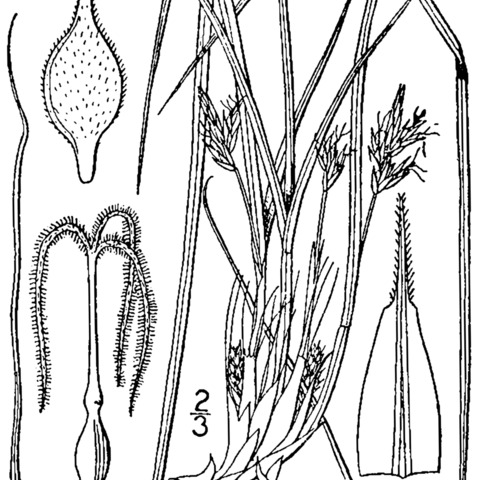Cespitose and mat-forming, fibrillose at base; stems all short but of varying length on the same plant, to ca 2 dm, mostly well surpassed by the lvs; lvs to 4 dm at maturity, mostly 2–4 mm wide; terminal spike staminate, 5–8 mm; pistillate spikes 2 or 3, 4–7 mm, sessile, all ± closely associated with the staminate spike, none basal; lowest bract often surpassing the infl; staminate scales short-cuspidate to obtusish; pistillate scales mostly dark purple except the narrow midrib, short-cuspidate to merely acute, wider and from a little shorter to a little longer than the largely concealed perigynia; perigynia 6–15, dull green or yellowish-green, sparsely short-hairy, 3–4 mm, slightly flattened, oblong-obovoid above a stipe-like base, 2-keeled, abruptly contracted into a slender beak 1 mm; achene rounded-trigonous. Dry woods, chiefly in acid soils on the coastal plain; Conn. to Fla. and La., n. in the Mississippi Valley to s. Ind. and s. Mo.; disjunct in s. Ont.

